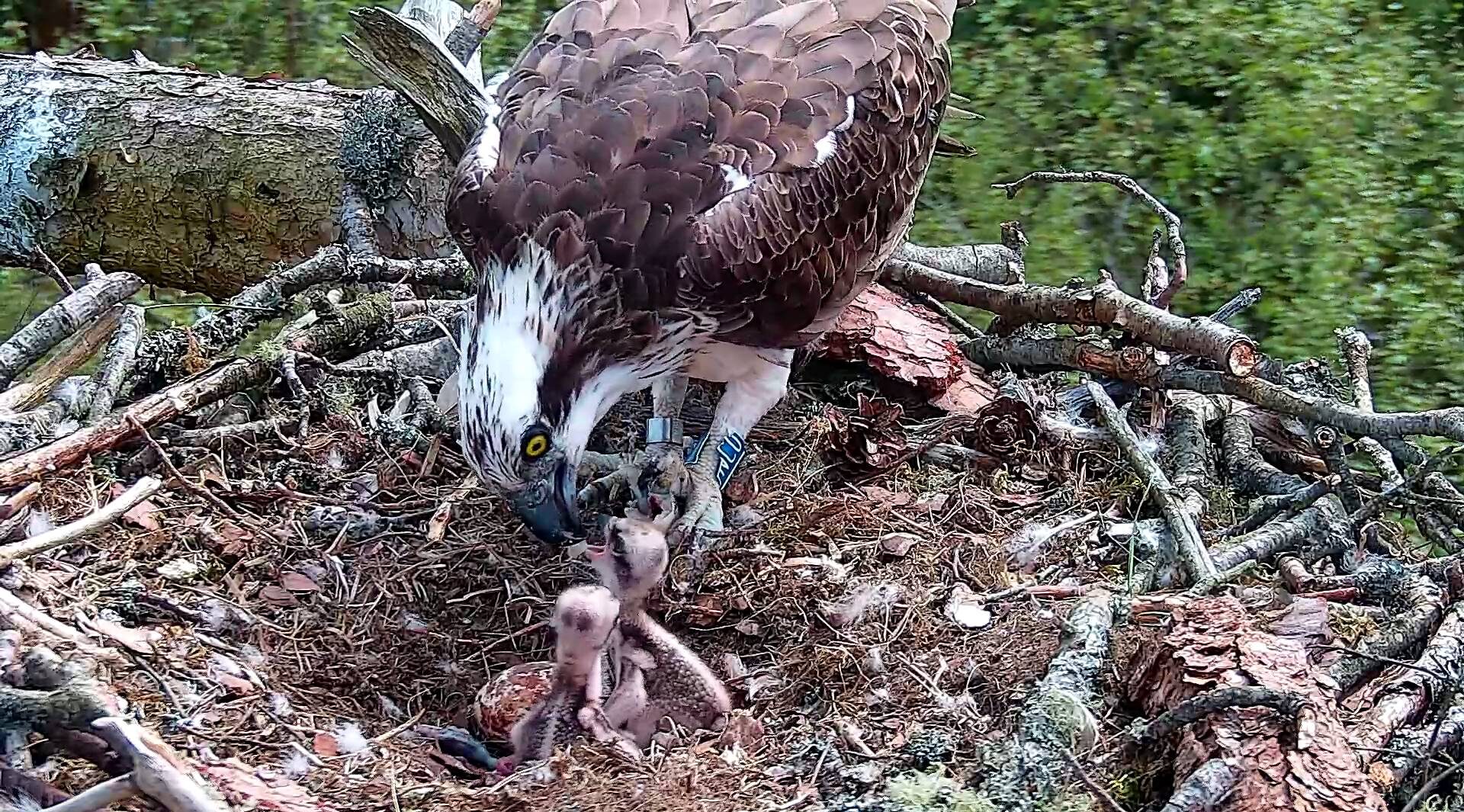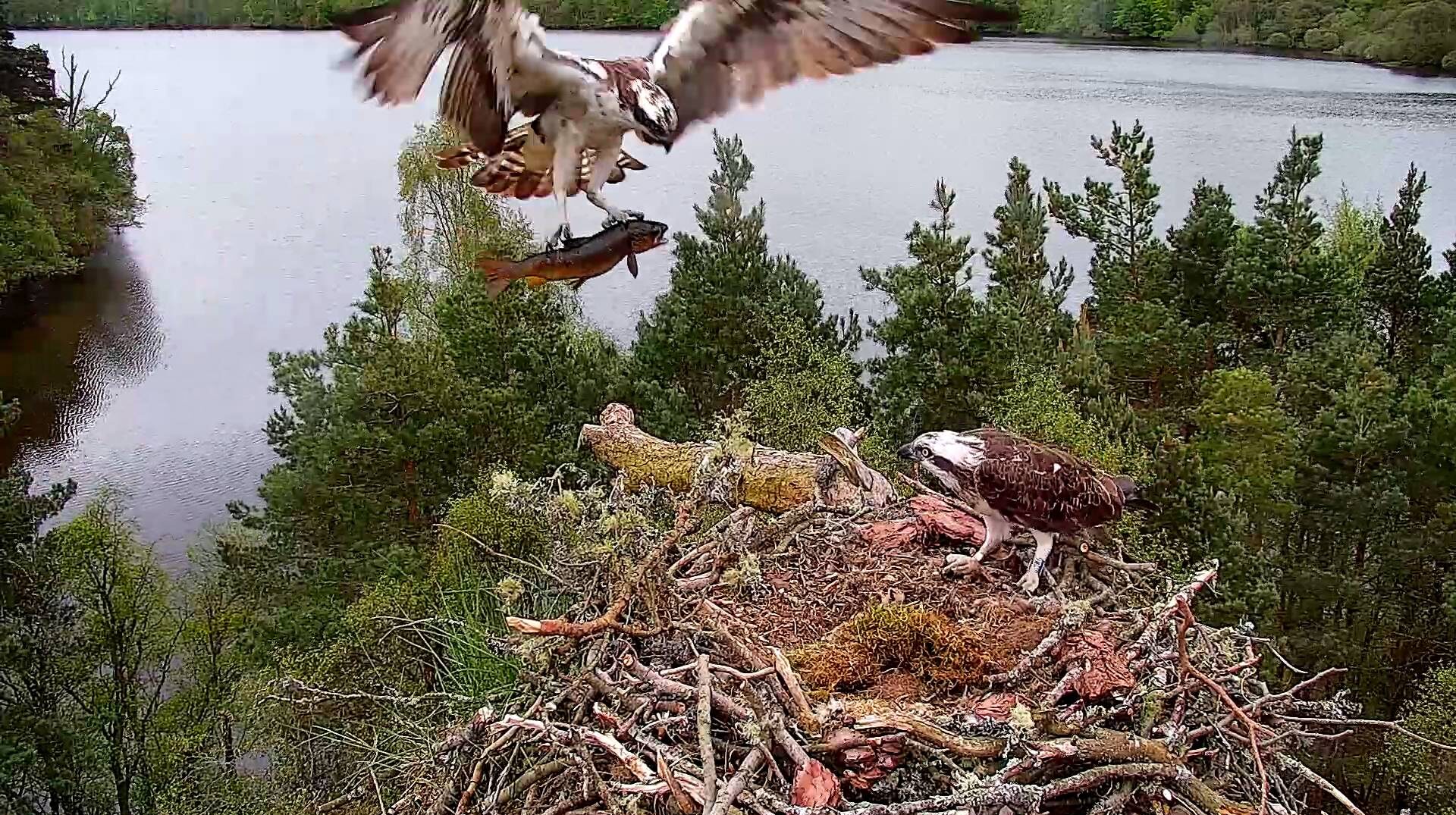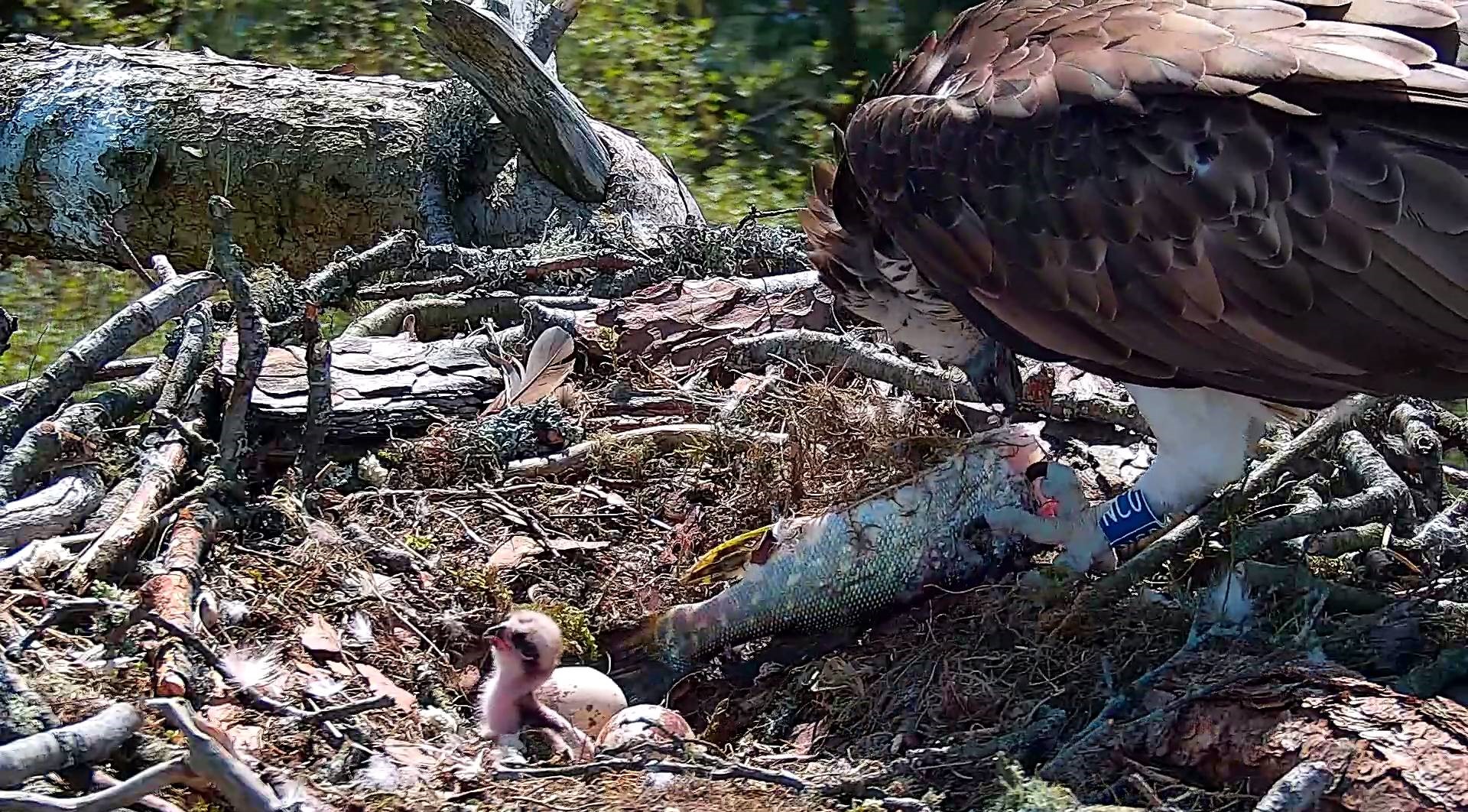Osprey Diary at the Loch of the Lowes – Week 9
It’s been quite the dramatic week since we published the osprey diary last Friday, keenly watching the egg ‘pip’ of the first osprey chick grow larger! Best settle down with a brew to catch up on all the news.
There was much excitement the following day, when on Sat 13th May at 12:11 the first chick fully hatched from its egg, the earliest an osprey chick has ever hatched on the reserve!
However, the celebratory high that accompanied the first hatch was short lived. As many of you who follow the osprey webcam will already know, the Lowes breeding male LM12 had been struggling to bring fish back to the nest for several days due to an injury to his flank. We suspect that this was caused by another osprey, either when defending the nest, or at a hunting ground where competition can be high.
Whilst the newly born chick had absorbed nutrients from the egg sac to keep it going for a good 24 hours, the timing of LM12’s injury was becoming critical. Finally, a fine looking brown trout was delivered on the Sunday evening, some 87 hrs after female NC0’s last meal, which she eagerly devoured part of, off the nest. The chick was quickly brooded from the chill night air and offered a few pieces of fish in the early hours, though we can’t be sure it managed to swallow any. However, some 48 hours after hatching that the chick finally had its first proper feed.
As if that wasn’t enough excitement, what looked to be a pip hole appeared on the other darkly coloured egg on Monday afternoon. It seems however, that either this might have been a piece of fish scale stuck to the egg, or that this chick didn’t manage to make it to full hatch, since at 4:19am on Tuesday morning the next chick hatched, from the third egg – the palest of the trio!
We won’t know until later in the season when the egg can be retrieved whether it was viable, if the chick was indeed hatching and became exhausted, or if perhaps it had been damaged earlier in the incubation process.
Laying a clutch on average of 3 eggs is a good insurance policy for osprey, as is the ‘asynchronous hatching’ of each chick one after the other. This means that if something happens to one of the eggs or young, there are times of poor weather or a lack of fish coming to the nest, there are other chicks to take the place of any that don’t make it. The good news is, having two healthy chicks on the nest means there is more food to go round!

The fish have continued to flow in and increase in number over the last few days, with LM12 making deliveries of 2 trout and 2 pike yesterday – quite a difference from this time last week when we we concerned for the survival of the chick, remaining eggs to hatch and of course LM12 himself! The two chicks appear in rude health, sparring enthusiastically with each other to determine the pecking order at feeding time. It seems sibling rivalry is common among ospreys as well as humans, though mother NC0 is good at ensuring both are presented with food!

Now that there are chicks to feed on the nest and protect from any opportunist predators or intruding osprey, the female NC0 is eating her meals there too, rather taking the fish to a nearby perch. This has given us the opportunity to observe osprey eating habits up close. Compared to other raptor nests, ospreys are fastidiously tidy and every part of the fish is consumed, including the bones, innards and any dropped morsels.
Along with brown trout being caught from the river, we are also seeing a steady supply of pike starting to come into the nest now too, with one huge one being sighted swimming in the shallows of the loch near the hides. This is an encouraging sign that indicates the recent warmer weather is finally providing better conditions for insect hatching, which in turn brings the fish closer to the surface of the water where they are in reach of LM12’s talons. We should start to see other species such as perch featuring on the osprey menu!

Another sure sign of improving fishing conditions is that LM12 was observed fishing in front of the hide for the first time this year and has been seen hovering in the same area on multiple occasions since then. For those wildlife photographers out there keen to catch that elusive shot of an osprey fishing, now is the time to visit Lowes.
We end this week on a high, with well fed chicks with full crops, LM12 back on fishing form and more warm weather on the horizon.
Make sure you stay tuned to the live webcam to follow the hatching and keep up to date with the daily lives of the ospreys by following us on Twitter or Facebook for regular updates.
The Species Protection Team
The Trust’s Osprey Protection Programme at Loch of the Lowes is supported by players of People’s Postcode Lottery.
Help protect Scotland’s wildlife
Our work to save Scotland’s wildlife is made possible thanks to the generosity of our members and supporters.
Join today from just £3 a month to help protect the species you love.
Preface
It’s been quite the dramatic week since we published the osprey diary last Friday, keenly watching the egg ‘pip’ of the first osprey chick grow larger! Best settle down with …
